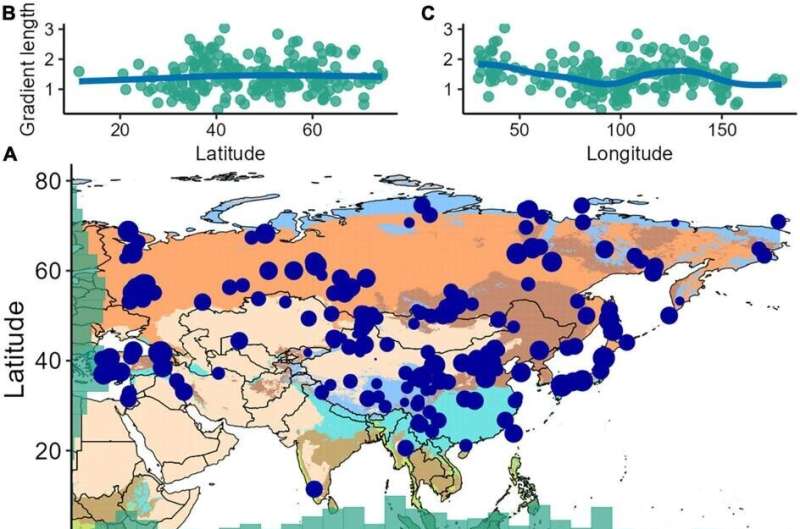This article has been reviewed according to Science X's editorial process and policies. Editors have highlighted the following attributes while ensuring the content's credibility:
fact-checked
peer-reviewed publication
trusted source
proofread
Fossil pollen helps us understand changes in Asia´s ecosystem over the last 12,000 years

By using a unique set of data researchers at the University of Bergen show that vegetation change in Asia during the last 12,000 years for the most part has been heterogeneous across space and time. But during the recent millennia vegetation on the continent has progressively been turning more homogeneous as result of human activity during the mid-to-late Holocene.
Historical legacies influence present-day ecosystem composition and dynamics. It is therefore important to understand the long-term dynamics of ecosystems and their properties.
Postdoctoral Fellow at The University of Bergen(UiB), and lead author of the research paper "Exploring spatio-temporal patterns of palynological changes in Asia during the Holocene," Kuber Prasad Bhatta, has done extensive analysis of ecosystem properties during the Holocene, the last 12,000 years, in Asia.
"To the best of our knowledge, this study is first of its kind from Asia regarding the scale and scope, which analyzes the spatial and temporal variation in vegetation on the Asian continent during the Holocene," says Bhatta.
In the paper a team of scientists led by Bhatta are using 205 fossil pollen records to provide valuable insights into past ecosystem dynamics by summarizing pollen-assemblage properties (PAPs).
"By using the unique data of 205 fossil pollen records compiled across the continent, spatio-temporal changes in vegetation in Asia are analyzed in terms of 8 properties of pollen-assemblages (vegetation or ecosystem) such as Hill's richness, diversity, and evenness; compositional turnover; and rate of pollen compositional change, each at the level of individual pollen record, climate zone within the continent, and entire continent," says Bhatta.
Striking findings
In addition to the unique data-sets Bhatta has been researching, the findings are also striking.
"This study shows that vegetation change in Asia during the Holocene has been generally heterogeneous across space and time, which is most likely a response of vegetation to regional climate- and land-use- changes during the period. However, in general, temporal patterns of compositional turnover and change imply that vegetation in Asia may have turned progressively homogeneous during the Holocene, especially during the most recent millennia," says Bhatta.
According to Bhatta and his colleague's, human activity during the mid- to late-Holocene, are the main reasons for a more homogeneous vegetation across Asia.
"The findings we made are responses to major continent- and Holocene-wide environmental changes. The reason for those systematic changes points to human activity and land-use changes such as agricultural expansion, forest clearance, forest fire, etc. may have resulted in temporally homogenous vegetation composition," says Bhatta.
The findings are published in the journal Frontiers in Ecology and Evolution.
More information: Kuber P. Bhatta et al, Exploring spatio-temporal patterns of palynological changes in Asia during the Holocene, Frontiers in Ecology and Evolution (2023). DOI: 10.3389/fevo.2023.1115784
Journal information: Frontiers in Ecology and Evolution
Provided by University of Bergen





















